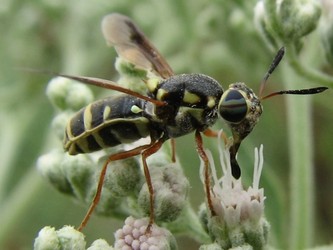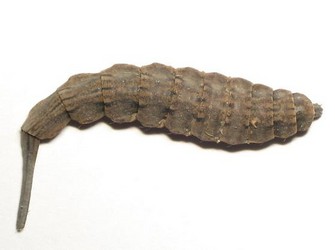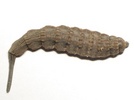Stratiomyinae
Keith Bayless- Oxycerini
- Caloparyphus
- Dicorymbimyia annulata
- Euparyphus
- Glariopsis brasiliana
- Glaris mexicana
- Hermionella seguyi
- Oxycera
- Pachyptilum hennigi
- Peritta melichlora
- Stuckenbergiola jugorum
- Vanoyia tenuicornis
- Prosopochrysini
- Acanthasargus
- Cyphoprosopa lindneri
- Exochostoma
- Hoplistopsis geminatus
- Melanochroa dubia
- Myxosargus
- Nothomyia
- Prosopochrysa
- Rhaphiocerina hakiensis
- Stratiomyini
- Afrodontomyia
- Alliocera graeca
- Anopisthocrania zonata
- Anoplodonta
- Catatasis
- Chloromelas
- Crocutasis abyssinica
- Cyrtopus
- Dischizocera
- Gongroneurina apidina
- Hedriodiscus
- Hoplitimyia
- Metabasis rostratus
- Nyassimyia
- Odontomyia
- Oplodontha
- Panamamyia silbergliedi
- Pinaleus
- Promeranisa
- Psellidotus
- Rhingiopsis
- Scapanocnema spatulipes
- Stratiomyella nana
- Stratiomys
- Systegnum
- Zuerchermyia
- Zulumyia
Introduction
This is the most species rich subfamily of soldier flies. Stratiomyinae are generally large, brightly colored flies that often visit flowers. Many species mimic aculeate Hymenoptera. Among the best bee mimics in Stratiomyinae is Nyassimyia andreniformis from Malawi and South Africa, the larvae of which have been collected in tree holes (Woodley 2001).
The larvae of most Stratiomyinae are aquatic. Some have evolved tolerance to extreme habitats, such as brackish water and hot springs (James 1965). Oxycerini larvae are often found in mossy seepage areas and madicolous habitats (a thin film of water running over stone). Mature aquatic larvae crawl out of water to pupate terrestrially under stones or leaf litter (Woodley 2001) .
Characteristics
Oxycerini is distinguished by the 6 antennal flagellomeres, m-cu absent, M veins weakened distally. The m-cu crossvein is present in Stratiomyini and Prosopochrysini. The A1 vein is sinuous in Prosopochrysini but straight in Stratiomyini. Prosopochrysine flies generally have slender, unpatterned abdomens and 5 antennal flagellomeres while flies in the tribe Stratiomyini often have brightly patterned abdomens which are at least three-fourths as broad as long and 5 or 6 antennal flagellomeres (James 1981).
Discussion of Phylogenetic Relationships
The Oxycerini are sometimes placed in the Clitellariinae. Woodley (2001) and Brammer and von Dohlen (2007) concur that the group is more closely related to the other stratiomyine tribes. Myxosargus is placed with Raphiocerinae in Brammer and von Dohlen's (2007) phylogenetic analysis, bringing into question the monophyly of Stratiomyinae.
References
Brammer, C.A. and C.D. von Dohlen. 2007. The evolutionary history of Stratiomyidae (Insecta: Diptera): the molecular phylogeny of a diverse family of flies. Mol. Phylogenet. Evol. 43:660-73.
James, M.T. 1965. Family Stratiomyidae. Pp.299-319, in Stone, A., C. Sabrosky, W. Wirth, R. Foote, J. Coulson. A catalog of the Diptera of America north of Mexico. Agricultural Research Service, USDA, IIV, 1-1696.
James, M.T. 1981. 36. Stratiomyidae. Manual Nearct. Dipt. 1: 497-511.
Woodley, N. E. 2001. A World Catalog of the Stratiomyidae (Insecta: Diptera). Myia 11: 1-473. Backhuys Publishers, Leiden.
Woodley, N. E. 2008. Two new Stratiomyinae, including Panamamyia gen. nov., from the Neotropical Region (Diptera: Stratiomyidae). Zootaxa 1701:29-39.
Title Illustrations

| Scientific Name | Hoplitimyia constans |
|---|---|
| Location | Fayetteville, Washington County, Arkansas, USA |
| Specimen Condition | Live Specimen |
| Identified By | Norman Woodley |
| Life Cycle Stage | Adult |
| Source Collection | BugGuide.Net |
| Image Use |
 This media file is licensed under the Creative Commons Attribution-NonCommercial-NoDerivs License - Version 1.0. This media file is licensed under the Creative Commons Attribution-NonCommercial-NoDerivs License - Version 1.0.
|
| Copyright |
© Edward Trammel

|
| Scientific Name | Stratiomys |
|---|---|
| Location | Ascension Parish, Louisiana, USA |
| Specimen Condition | Live Specimen |
| Identified By | Norman Woodley |
| Life Cycle Stage | Larva |
| Image Use |
 This media file is licensed under the Creative Commons Attribution-NonCommercial License - Version 2.5. This media file is licensed under the Creative Commons Attribution-NonCommercial License - Version 2.5.
|
| Copyright | © Perry Babin |
About This Page
Keith Bayless

North Carolina State University, Raleigh, North Carolina, USA
Correspondence regarding this page should be directed to Keith Bayless at
Page copyright © 2008 Keith Bayless
All Rights Reserved.
- First online 28 September 2008
- Content changed 28 September 2008
Citing this page:
Bayless, Keith. 2008. Stratiomyinae. Version 28 September 2008 (under construction). http://tolweb.org/Stratiomyinae/23964/2008.09.28 in The Tree of Life Web Project, http://tolweb.org/










 Go to quick links
Go to quick search
Go to navigation for this section of the ToL site
Go to detailed links for the ToL site
Go to quick links
Go to quick search
Go to navigation for this section of the ToL site
Go to detailed links for the ToL site